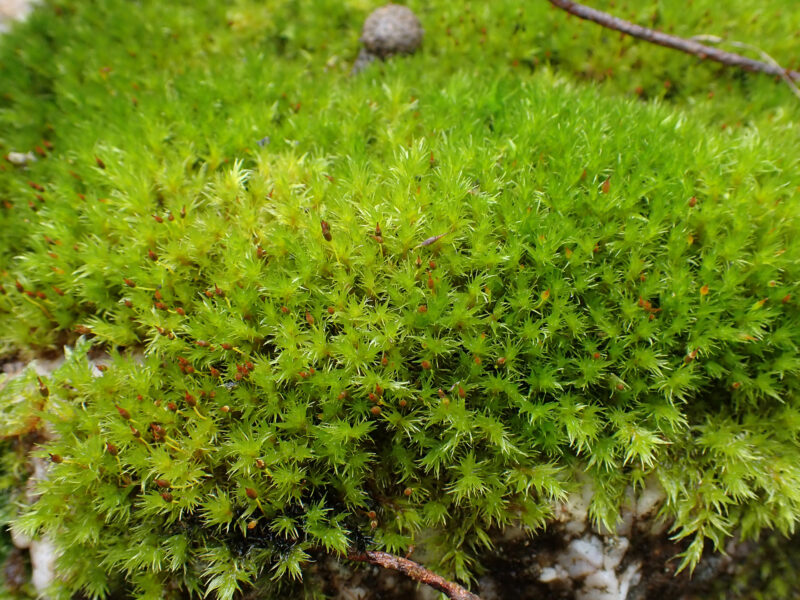Identification notes
Even battle-hardened bryological storm troopers, veterans of hard-fought mossing campaigns in the west of Scotland, shift uneasily in their seats when faced with the prospect of an unknown Grimmia to identify. Imagine their relief when they observe the nerve section of this moss – the dorsal side of which is clearly two-winged above. No other British Grimmia has this feature. The much rarer G. muehlenbeckii usually has the dorsal side of the nerve ribbed, but nothing like as spectacularly.
Let’s back-pedal for a moment and think about what this moss looks like in the field. When at its best, growing on rocks near water, the long, curved, yellowish-green shoots of this moss don’t immediately suggest a Grimmia. Lacking a hair point, it can be overlooked as Racomitrium aquaticum, which often grows in similar habitat (see comparison photo below). However, the much sharper leaf-tip of the Grimmia is a giveaway, and when dry, the winged rear surface of the upper part of the nerve can even be seen through the hand lens. Now turning to microscopic features once more, the basal cells near the nerve in this moss are very long, with nodulose walls, so the unwary might even be tempted to think of a Racomitrium again. However the basal marginal cells are quite smooth and the nerve section leads us straight to the correct identification. A beautiful moss, both in the field and under the microscope.
Read the Field Guide account





















